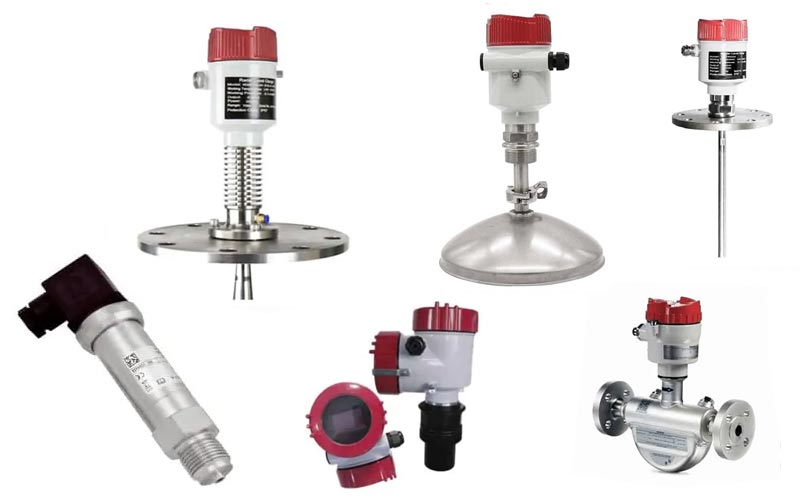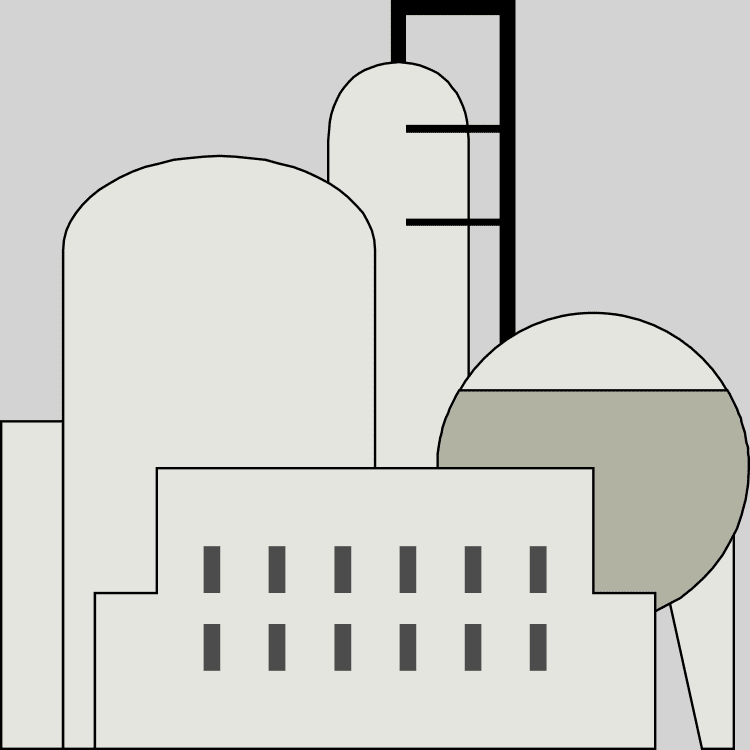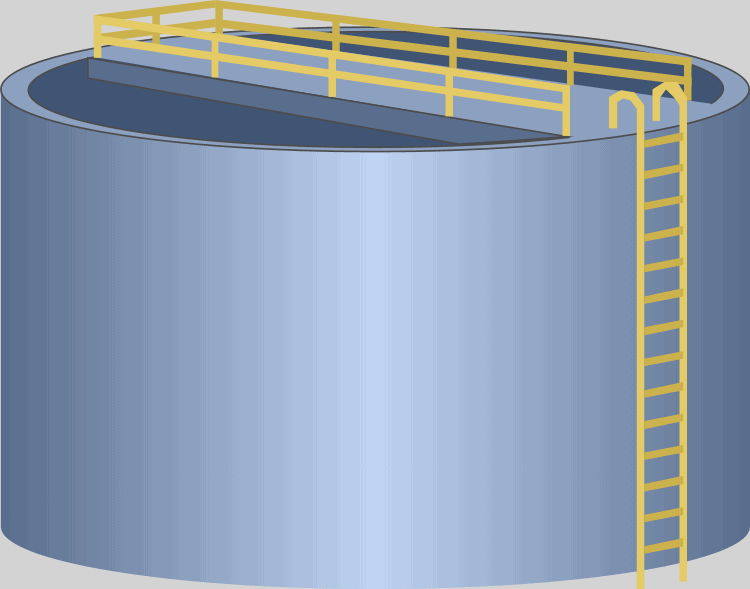Ultrasonic Level Sensors
Accurate non-contact measurement for liquids and solids. Built for harsh industrial conditions with corrosion-resistant design and no moving parts.
Do You Need a Device to Measure Solid and Liquid Levels?
The ultrasonic level sensor is a smart, non-contact measurement device that prevents contamination from dirt or rust. It works perfectly in harsh environments without worrying about corrosion from water or other liquids. With no moving parts, it resists shock waves and ensures long-term reliability.
Key Features
- High performance in extreme pressure, temperature, and humidity
- Compatible with liquids, powders, slurries, solids, and gases
- Multiple probe types for different industrial applications
- Built to meet demanding industrial standards
Advantages and Disadvantages of Ultrasonic Level Sensors
Ultrasonic level sensors provide accurate and non-contact measurement for liquids and some solids. Click below to view their key advantages and limitations.
- Simple operation and easy installation
- Simple construction and design
- Non-contact with processed material
- No moving parts, low maintenance
- Continuous water level detection
- Suitable for liquids and certain solids
- High accuracy and precision
- Self-cleaning effect from vibrating sensor diaphragm
- Affected by turbulence or heavy foam on the liquid surface
- Higher cost compared to some other sensors
- Limited sensing capability at long range
- Not suitable where vapor or fumes develop
- Requires a minimum distance from tank walls or internal objects
Where to Use Ultrasonic Level Sensors
Ultrasonic level sensors are versatile devices used across many industries to ensure accurate, contactless level measurement. From food and beverage production to heavy industrial processes, they help maintain product quality and optimize automated operations.
Biologic Gas Plant
In a biologic gas plant, gas generation causes the flexible tarpaulin that covers the tank to expand. An ultrasonic level sensor installed above the tarpaulin measures the decreasing distance as the gas volume increases. This provides safe, accurate, and contactless monitoring of biogas production.
- Continuous and precise detection of gas volume changes
- Non-contact measurement for hygiene and safety
- Reliable even in humid or corrosive environments
- Maintenance-free design with no moving parts
- Ideal for automated biogas production monitoring
Industrial Application
In industrial plants, ultrasonic level sensors provide accurate, non-contact measurement of liquids and solids. They are used for monitoring chemical tanks, oil reservoirs, process vessels, and storage silos. By integrating with PLC, SCADA, or DCS systems, they enable automated control and improve operational safety.
- Reliable measurement for chemical, oil, and water tanks
- Works in high temperature, pressure, and humidity conditions
- Integrates with industrial automation for real-time monitoring
- No moving parts, reducing maintenance and downtime
- Supports 4–20 mA, Modbus, and other industrial outputs
Sewage Application
In sewage and wastewater treatment plants, ultrasonic level sensors provide precise, non-contact measurement of liquid levels. They help monitor tanks, sumps, and pumping stations to prevent overflow, reduce energy usage, and ensure smooth process control without the risk of contamination.
- Continuous monitoring of sewage tanks and sumps
- Non-contact measurement prevents fouling or contamination
- Reliable operation in corrosive and high-humidity conditions
- Integrates with SCADA/PLC for automated control and alarms
- Maintenance-free with no moving parts
Fuel Application
In fuel storage and distribution facilities, ultrasonic level sensors provide accurate, non-contact measurement of diesel, petrol, biofuel, and other liquid hydrocarbons. They help prevent overfilling, ensure safe inventory management, and integrate with automation systems for reliable fuel handling.
- Precise measurement for diesel, petrol, and biofuel tanks
- Non-contact technology for maximum safety and cleanliness
- Integrates with PLC, SCADA, and inventory systems
- Reliable performance in high-temperature and flammable environments
- Maintenance-free design with no moving parts
Slurry Application
In mining, chemical processing, and wastewater plants, ultrasonic level sensors provide precise, non-contact measurement of slurry tanks and pipelines. They withstand abrasive and sticky mixtures while delivering reliable, maintenance-free operation for level monitoring and process control.
- Accurate non-contact level measurement for abrasive slurries
- Resistant to buildup, corrosion, and high humidity
- Integrates with PLC/SCADA systems for automation and alarms
- Minimizes maintenance downtime—no moving parts
- Ideal for mining, chemical, and wastewater industries
Tank Level Sensor Installation Tips
You’re about to install the tank level sensor. Before you start, here are some important things you should know to ensure a successful and accurate installation.
- Study the installation process carefully – A proper installation is critical to avoid failed operation or poor performance. Review all instructions before starting.
- Check all connections – Make sure transmitter and receiver units are securely connected with no loose wiring or fittings.
- Maintain a clear ultrasonic path – Confirm there are no objects or devices blocking the ultrasonic beam. Avoid placing the sensor near internal structures or equipment that can create false echoes.
- Use a reflector plate if necessary – If the tank design has internal obstacles, install a reflector plate to deflect unwanted echoes and improve measurement accuracy.
- Keep proper distance from walls – Installing too close to the tank wall can cause false readings from adhesive materials or residue. This is especially important in crude oil storage tanks, mud tanks, and cement mixing tanks.
Frequently Asked Questions
Find quick answers about our ultrasonic level sensor technology and applications.
An ultrasonic level sensor is a non-contact device that measures level by sending sound pulses and calculating the time it takes for the echo to return. This provides precise level readings without touching the liquid or solid surface.
The sensor emits high-frequency ultrasonic pulses toward the target surface. When the sound waves reflect back, the sensor measures the time delay and converts it into a distance or level reading using the speed of sound.
The transmitter converts the measured echo time into electrical outputs such as 4–20 mA, Modbus, or digital signals. These outputs can be integrated into PLC, SCADA, or other industrial control systems for real-time monitoring.
Heavy foam, dust, turbulence, or extreme temperature changes can slightly influence ultrasonic signal reflection. Proper sensor placement and configuration minimize these effects for reliable operation.






